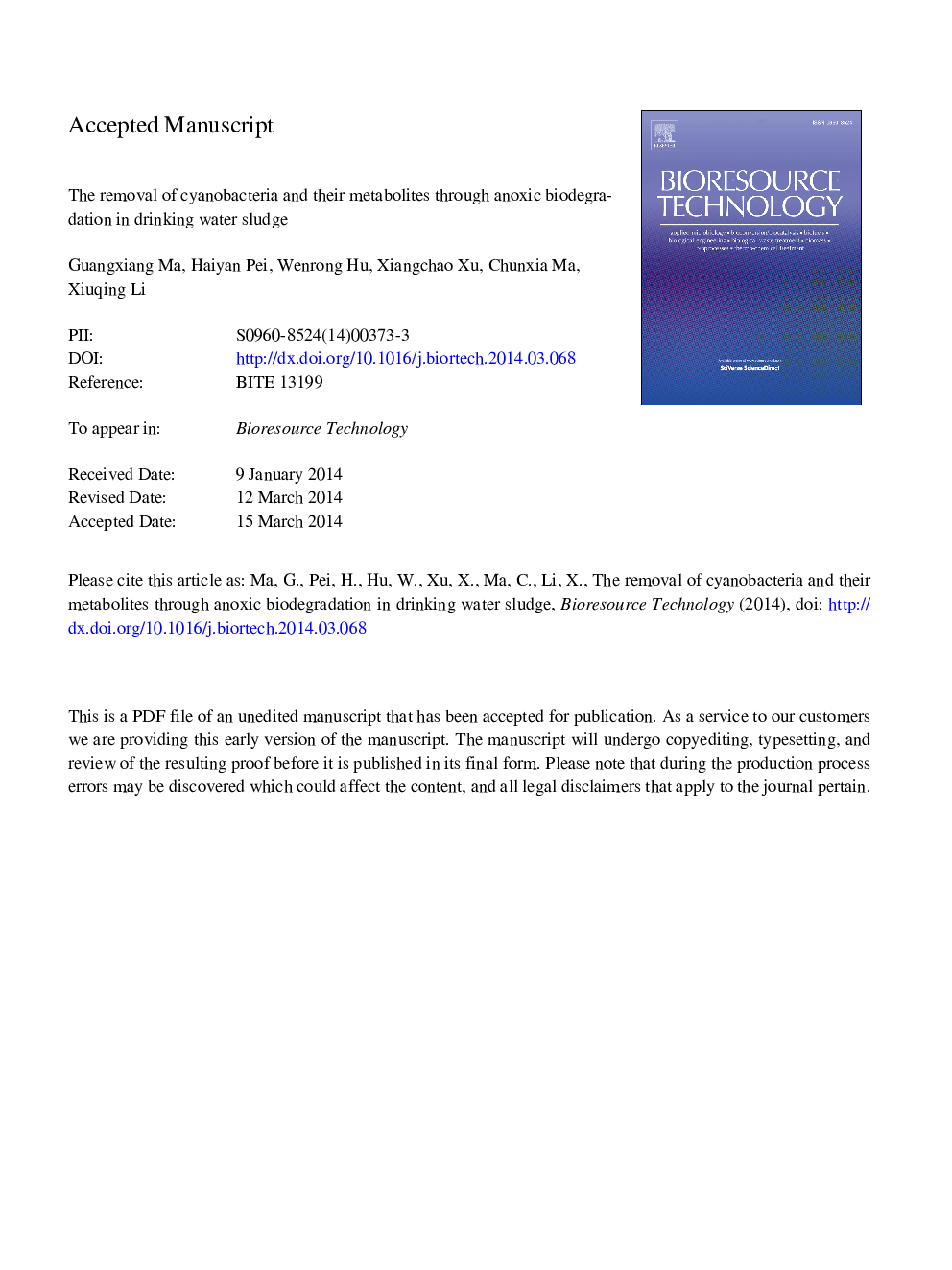| Article ID | Journal | Published Year | Pages | File Type |
|---|---|---|---|---|
| 7077482 | Bioresource Technology | 2014 | 37 Pages |
Abstract
The effects of environmental factors on cyanobacteria damage and microcystin-LR degradation in drinking water sludge were investigated under anoxic conditions. The rates of microcystin-LR release and degradation increased rapidly with the increasing temperature from 15 °C to 40 °C and the highest degradation rate of 99% was observed at 35 °C within 10 days. Compared to acidic conditions, microcystin-LR degraded more rapidly in weak alkali environments. In addition, the microbial community structures under different anoxic conditions were studied. The sequencing results showed that four phyla obtained from the DGGE profiles were as follows: Proteobacteria, Acidobacteria, Firmicutes and Cyanobacteria. Proteobacteria containing nine genera were the most common species. Pseudomonas, Methylosinus and Sphingomona all showed stronger activities and had significant increase as microcystin-LR degraded, so they should be responsible for the microcystin-LR degradation. This is the first report of Pseudomonas, Methylosinus and Sphingomonas as the microcystins-degrading microorganisms in anoxic drinking water sludge.
Related Topics
Physical Sciences and Engineering
Chemical Engineering
Process Chemistry and Technology
Authors
Guangxiang Ma, Haiyan Pei, Wenrong Hu, Xiangchao Xu, Chunxia Ma, Xiuqing Li,
